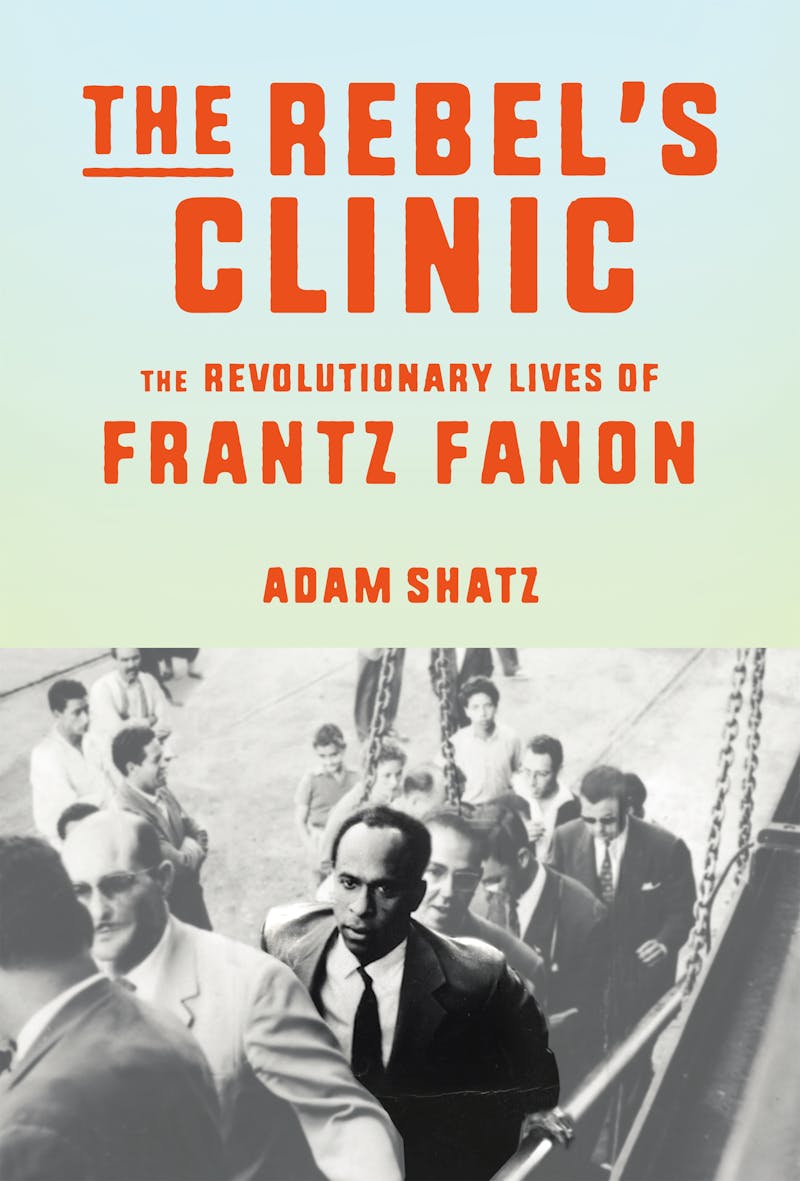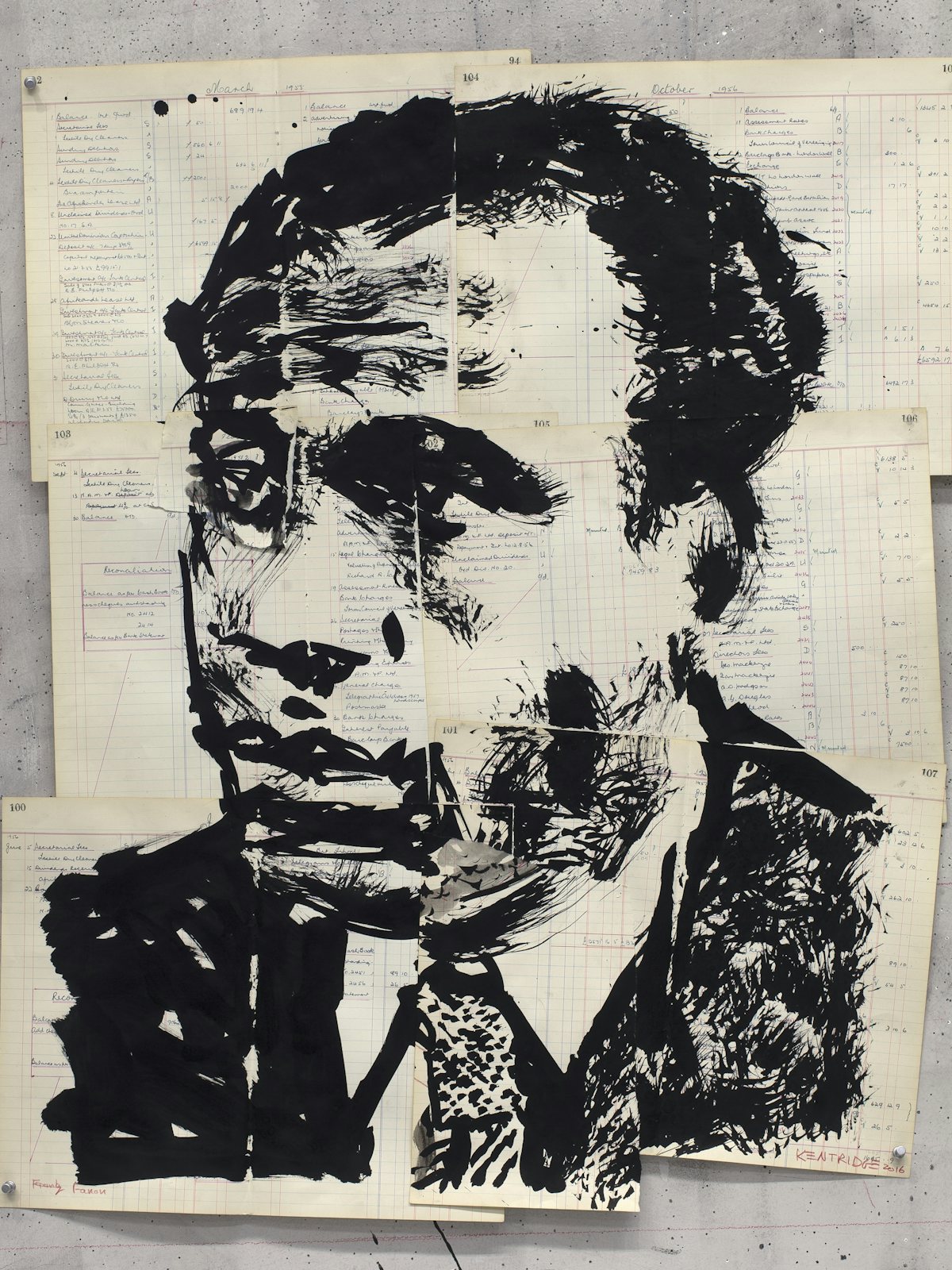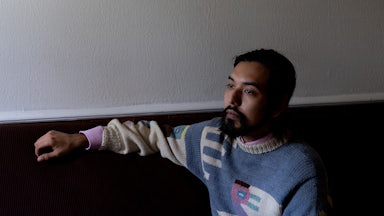Near the end of The Battle of Algiers, the 1966 film directed by Italian leftist Gillo Pontecorvo, crowds waving flags and chanting slogans surge into the streets of the Algerian capital. The scene is set on December 11, 1960. President Charles de Gaulle was visiting France’s prized Mediterranean colony, when apparently spontaneous demonstrations revived an anti-colonial movement that had seemed on the verge of military defeat. Confronted with the persistence of popular support for the National Liberation Front and facing a rising tide of criticism at the United Nations, de Gaulle soon afterward opened negotiations that would lead, eventually, to Algerian independence in 1962.
Pontecorvo’s fluid camerawork in the protest scenes conveys a sense of irrepressible movement, in contrast with the restricted mobility earlier imposed by French forces. Counterinsurgency in The Battle of Algiers is above all a matter of keeping people in place: maintaining checkpoints and barbed-wire borders between the European and “native” quarters; driving insurgents into ever more constricted, often underground hideouts; and, most literally, shackling bodies in prison cells and torture chambers. The triumph of anti-colonialism is, conversely, a festival of free movement. In Pontecorvo’s version of December 11, protesters flood into the well-ordered neighborhoods inhabited by European settlers and dance joyously in the face of menacing soldiers. Reclaiming space, dissolving boundaries, and breaking free from physical constraint are portrayed as prerequisites to political independence.

Pontecorvo’s vision owed a great deal to the radical psychiatrist and writer Frantz Fanon. In some of the most famous passages of his most famous work, The Wretched of the Earth (1961), Fanon wrote of the colonial subject as “a being hemmed in.”
The first thing which the native learns is to stay in his place, and not to go beyond certain limits. This is why the dreams of the native are always of muscular prowess; his dreams are of action and of aggression. I dream I am jumping, swimming, running, climbing.
Decolonization for Fanon was a process of transforming dreams of mobility into reality. It was also, inevitably and not entirely regrettably, a violent process. The stark dichotomy of the colony—“a world cut in two,” between the tightly circumscribed zones of the colonizer and the colonized—was defended by force and could only be dismantled by force. Although the fast-moving coda of the film elides the body count, more than 100 people were killed and hundreds more injured in the events of December 1960. Writing at just this moment, Fanon observed that the violence of colonial rule “will be claimed and taken over by the native at the moment when, deciding to embody history in his own person, he surges into the forbidden quarters” and brings about the abolition of the colonial world.
No one did more than Fanon (and, perhaps, Pontecorvo) to make decolonization the new master narrative of the left in the 1960s. At a moment when European radicals, losing patience with the reactionary tendencies of the working classes at home, shifted their hopes to the masses of the so-called Third World, Fanon succeeded in refashioning the Algerian story into a universal fable of revolutionary possibility: dispossessed against privileged, slave against master, Black against white. As Adam Shatz traces in his new biography of Fanon, The Wretched of the Earth spread across the world within a few years of its appearance, “read in Spanish by Latin American guerrillas in a Cuban translation commissioned by Che Guevara; in English, by ANC rebels in South Africa; in Portuguese, by anti-colonial fighters in Angola, Guinea-Bissau, and Mozambique; in Farsi, by Iranian Marxists and Islamic revolutionaries; and, not least, in Arabic, by Palestinian fedayeen in training camps in Jordan, Lebanon, and Syria.” Even Black Panthers in the United States would take inspiration from Fanon, finding parallels between the casbah and the ghetto.
Unlike many of the thinkers read by insurgents half a century ago, Fanon remains hugely influential today. When radicals (and would-be radicals) issue calls for “decolonization,” they are invoking Fanon’s vision of liberation through the dismantling of privileged enclaves. One reason for his continuing appeal is that he can be read in so many different ways: as a proponent of political violence and a chronicler of its destructiveness; as a spokesman for Black identity and a critic of its limitations; as a visionary of postcolonial utopia and a Cassandra of postcolonial failure.
But there is another explanation for Fanon’s durability. While some of his contemporaries made similar arguments about the lived experience of oppression and the warping effects of colonialism, Fanon did so from the perspective of a practicing psychiatrist. In treating patients who were often severely disturbed, he was able to see abstractions about the harm inflicted by racism and empire as flesh-and-blood realities. It was the imperative to heal that infused his politics with such urgency. We still read Fanon because he diagnosed the disease and worked for a cure.
Fanon’s ideas were forged in a life of serial self-reinvention. From the Caribbean, to Europe, to North Africa, to sub-Saharan Africa, he sought new identities out of frustration with the limits imposed by old ones. Resisting the blood-and-soil nationalisms and sectarian tribalisms that loomed large in his lifetime, he treated identity as plural and changeable. With varying degrees of ambivalence at different stages of his life, he considered himself West Indian, French, Algerian, and African, making him a conspicuously cosmopolitan or postmodern subject.
The Caribbean island colony of Martinique provides the starting point for Fanon’s journey not only in the obvious sense that he was born there in 1925, but also because he was haunted from an early age by a sense of his country’s political inadequacy. In contrast to Haiti, where slaves freed themselves by force in the great revolution of 1791–1804, emancipation came to Martinique in 1848 at the hands of a white savior, the liberal French minister Victor Schœlcher. A statue of him loomed over Fanon’s hometown, the capital, Fort-de-France (until it was torn down amid the Black Lives Matter protests of 2020).
Fanon’s fear of a failed or incomplete decolonization grew after 1946, when—with the support of the Martinican poet-statesman Aimé Césaire—Martinique and three other “old colonies” were not granted independence, but rather reclassified as “overseas departments” with the same political status as mainland France. Eventually breaking with Césaire and several West African leaders who saw a continued French connection as a lifeline for needed resources, Fanon resented the persistence of paternalism.
But even though he would fault Martinique for failing to liberate itself from France and Frenchness, he remained personally attached to both. Commitment to republican ideals prompted him to volunteer for Free French forces during World War II, when a Vichyite regime, the Tan Robé, intensified the racism and brutality of colonial rule on the island. Military service brought Fanon’s first exposure to the world-shattering violence of combat; his first glimpse of North Africa, where the anti-Black prejudices of the Arab population presaged future tensions; and the first fruits of his status as an évolué, an educated Caribbean subject who ranked higher in the imperial hierarchy than the West African soldiers known as tirailleurs sénégalais. Rather than resettling in his “native land,” as the title of Césaire’s 1939 poem Cahier d’un retour au pays natal had it, Fanon after the war returned to Martinique only briefly before deciding to pursue medical studies in France. His cauterizing wartime encounters with French racism—including, most painfully, the refusal of local women to dance with Black soldiers at a Liberation celebration in Toulon—only sharpened his determination to claim the rights and privileges of French citizenship. “We refuse to be treated as outsiders,” Fanon wrote a few years later. “We are well and truly part of French history and its drama.”
One of the more provocative elements of Shatz’s account is the suggestion that a residue of republican universalism, overlaid with existential and Marxist universalisms, left Fanon with a lasting “defiance of identity’s claims.” Fanon was, of course, well aware of the hypocrisies lurking within high-flown rhetoric of equality, and disdainful of naïvely color-blind ideologies that ignored the necessity of racial struggle. His first book, Black Skin, White Masks (1952), contained a searing indictment of misguided Francophilia, hopeless mimicry, and pathological self-loathing among his fellow West Indians. But Fanon also insisted on defining race as a product of material inequality rather than as an innate condition: “The black problem is not just about Blacks living among Whites, but about the black man exploited, enslaved, and despised by a colonialist and capitalist society that happens to be white.” Fanon would come to reject the Négritude espoused by Césaire and others, because it risked essentializing Blackness as a comfortable, even nostalgic, refuge rather than mobilizing it as a weapon of the weak.
A strength of The Rebel’s Clinic is the meticulous charting of the schools and figures that influenced Fanon’s thought. Fanon was an intellectual bricoleur, and his eclectic tendencies are especially conspicuous in Black Skin, White Masks, with its abundant references to Négritude as well as phenomenology, clinical psychiatry, psychoanalysis (in its Freudian, Jungian, Lacanian, and Adlerian variants), films, novels, folktales, and comic books. Perhaps most significant, he interpreted his experiences of everyday racism while a medical student—including the famous incident in a Lyons train carriage when a little boy shouted, “Look, maman, a nègre!”—through the prism of philosopher Maurice Merleau-Ponty’s writings on the embodied nature of perception. Blackness, according to Fanon, was constructed through the hostile gaze of others. He argued that Black people internalize the fear, loathing, and fascination that their appearance provokes in white onlookers, substituting an inherited burden of racial alienation for the freedom of authentic selfhood.
This argument bore close affinities to two contemporary accounts, Jean-Paul Sartre’s Anti-Semite and Jew (1946) and Simone de Beauvoir’s The Second Sex (1949), which both traced the identities of oppressed groups to the stereotypical projections imposed on them. These parallels underscore the capacious possibilities of solidarity in Fanon’s thought—though, as Shatz notes, Fanon was always far more generous about acknowledging his debts to Sartre than to de Beauvoir.
Fanon was not alone, either, in asking what colonialism did to the unconscious mind. Two other Francophone writers in the 1950s—a colonial official in Madagascar turned Lacanian analyst, Octave Mannoni, and a left-wing Tunisian Jew, Albert Memmi—produced their own binary narratives of the colonizer and the colonized locked in a psychological drama shaped by fantasy, insecurity, and the drive to dominate. What set Fanon on a more radical path was his encounter with North African migrant workers as patients in France. Voicing fears of imminent death, they reported diffuse aches and pains, fluttering heartbeats, splitting headaches—ailments dismissed by white doctors as imaginary. Fanon, rather than ascribing these complaints to hysteria or malingering, observed that Arab workers in France had to endure “a perpetual state of insecurity”: separated from their families and other meaningful relationships, isolated from French society, and offered little support or sympathy from the French state whose citizenship they nominally enjoyed. Their symptoms were the symptoms of a thoroughgoing dehumanization, a plight both exemplified and compounded by the callous incomprehension of the French medical establishment. Just as the Algerian independence movement gained much of its strength from Algerians based in France, Fanon first came to appreciate the insidious trauma of colonialism during his time there, at the center of empire.
Even so, there is no reason to think that Fanon and his wife, a white Frenchwoman named Josie, had revolution on their minds when they left mainland France for Algeria in 1953. While he could be counted a successful example of “assimilation” in many ways, neither his psychiatric nor his literary career had achieved overwhelming success. His prospects, like those of many other upwardly mobile Frenchmen, simply looked brighter on the other side of the Mediterranean. “Few people in France,” Shatz observes, “imagined at the time that a war of national liberation was imminent.” Here was the origin of the jibe, which circulated later among his comrades in the National Liberation Front, or FLN, who were resentful of his celebrity, that Fanon owed more to the Algerian Revolution than it owed to him. While he would eventually put his life in the service of the uprising that broke out in 1954, running grave risks as doctor, publicist, and ambassador for the FLN, he would always remain something of an outsider. As a French-educated Black man and secular intellectual who spoke little Arabic, he stood at odds with the Islamic and Arab nationalist currents within the independence movement and tended to overlook their significance in his writings.
Yet it was his anomalous background that made him both a perceptive observer of and a creative participant in the Algerian struggle. Steeped in the Caribbean heritage of plantation slavery, he saw that the extraction of labor and accumulation of wealth by force lay at the heart of empire everywhere. Used to challenging authority figures as he moved from place to place—his own father; Césaire; Sartre—he set about dismantling the authoritarian customs of the Blida-Joinville mental hospital outside Algiers, loosening patients’ isolation from the outside world and from one another. He encouraged them to socialize and engage in culturally meaningful pastimes as part of what he called “social therapy,” even installing a Moorish café for the use of his Muslim patients. He also set up a covert clinic for the treatment of FLN fighters and allowed FLN leaders to use the hospital for meetings.
Shatz is perhaps a bit too eager to cast Fanon as a forerunner of anti-psychiatry, the later movement that saw madness as a form of tragic knowledge and aimed at emptying out the asylums. He was, after all, an enthusiastic practitioner of electroshock therapy (a grim irony in light of the French army’s use of torture by electrocution on Algerian prisoners). More persuasive is the suggestion that shock therapy came to function as a political metaphor for Fanon, an extension of his faith in self-making through physical action. Like the jolts from the electrode, Shatz writes, violent resistance could offer “an exhilarating rush of self-confidence and energy that exploded the North African syndrome of depression and helplessness.” Later, in exile in Tunis, Fanon would employ equally heavy-handed methods—administering large doses of insulin and neuroleptics to induce comalike sleep—to restore insurgents to health in advance of their return to the battlefield.
The oracular status Fanon retains among academics and activists today has a way of obscuring his more questionable pronouncements. The relentless Manichaeanism of The Wretched of the Earth is in many ways a misleading guide to a conflict that saw deep and violent divisions within the colonized camp: between the FLN and rival anti-colonial movements; between FLN insurgents on the ground, “the forces of the interior,” and the exiled FLN command who amassed “an army of the frontiers” in Tunisia and Morocco; between Arabs and Berbers; between Algerians fighting on the French side (known as the harkis) and those fighting against it. Of course, Fanon was writing a manifesto, not history or journalism; he simplified in order to dramatize and expose any quest for compromise as illusory. Yet other parts of The Wretched of the Earth—including, most notoriously, his ode to landless peasants as the messianic vanguard of world revolution—have aged even less well.
The book is perhaps best read today not as a playbook for revolt but as a conflicted reflection on it. Beginning with an argument for the cathartic and constructive possibilities of violence, it ends with a series of psychiatric case studies that examine its devastating effects on French torturers and Algerian fighters alike. As Shatz notes, the tension mirrors Fanon’s cross-pressured role within the movement: “In his role as a spokesman for the FLN, Fanon dutifully presented a heroic image of the Algeria Revolution. But as a doctor, he was dressing the psychic wounds of Algeria’s soldiers, bearing witness to the kinds of horror that nationalist fables are designed to make us forget.” It is bleakly unsurprising that conservative elements in the FLN could co-opt his ideas about the peasantry into an official ideology while discarding his warnings about the authoritarian potential of anti-colonial movements.
Fanon did not live to witness the extraordinary global career of his book. He died of leukemia in a Bethesda, Maryland, hospital at the age of 36, a few weeks after The Wretched of the Earth was published. He was thus deprived of the opportunity to enjoy his ever-growing stature in the years that followed. He was also spared seeing many of his bleakest premonitions for a world after empire come true: the self-serving enrichment of postcolonial elites, the repressive redirection of insurgent discipline, the retreat into ethnic and sectarian exclusivism.
The Rebel’s Clinic does not reveal a strikingly different Fanon than does David Macey’s deeply researched Frantz Fanon: A Biography (2000). But it delivers a smoother, often engrossing, narrative, one that deserves to be the first stop for anyone looking for an introduction to Fanon’s life and work. Calls to “decolonize” today are Fanonian in the sense that Fanon understood decolonization as a process, not an event, and one of such world-historical significance that hierarchies and inequalities of all kinds would be called into question. For Fanon, struggles against racial subjugation, economic exploitation, and military occupation were necessarily linked. But—and this is an irony Shatz underlines—Fanon never wanted to see the heroic moment of the independence struggle frozen in amber. A modernist by temperament and ideology, he prized liberation from the burdens of the past in service of a higher goal: as he put it in The Wretched of the Earth, “to invent the total man whose triumph Europe has been incapable of realizing.” Whatever a Fanonian future might look like, it has not arrived yet.




